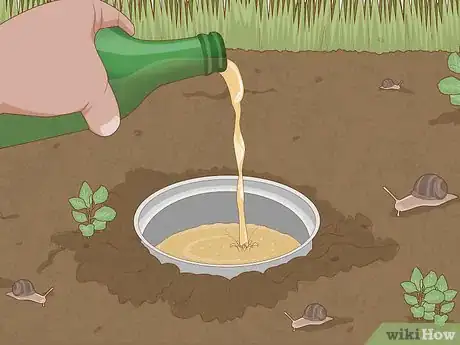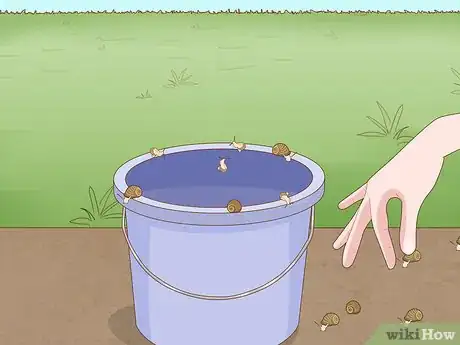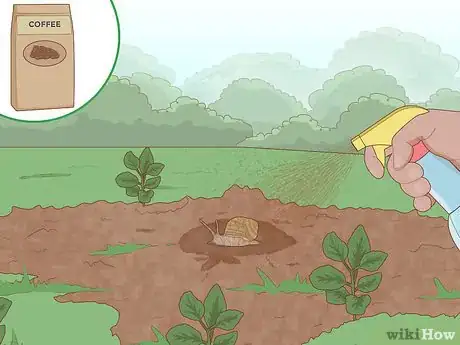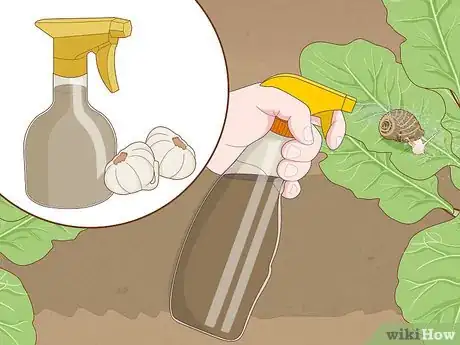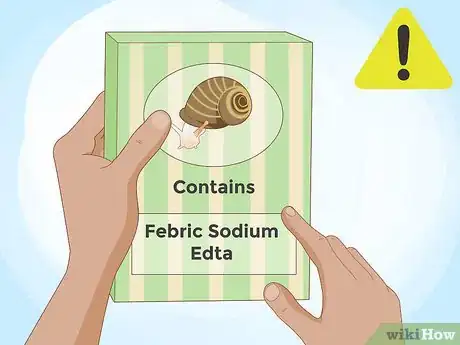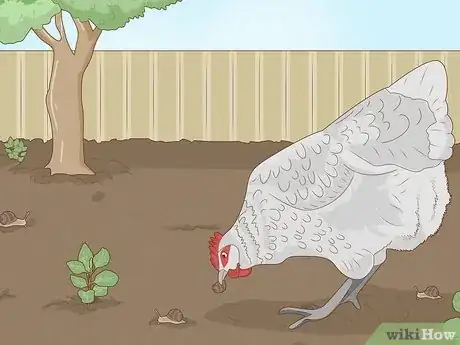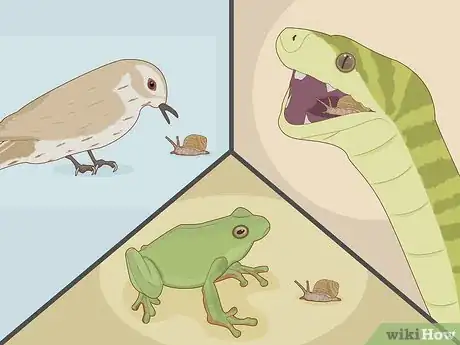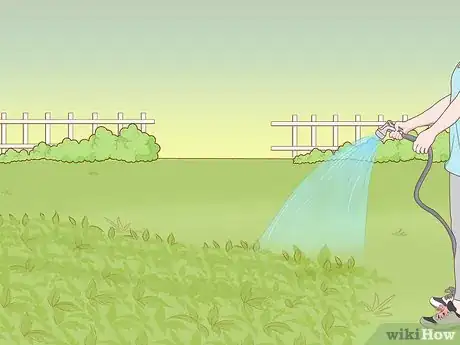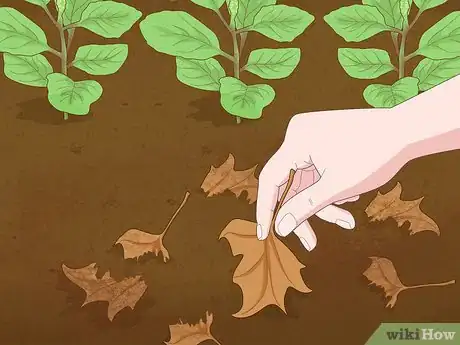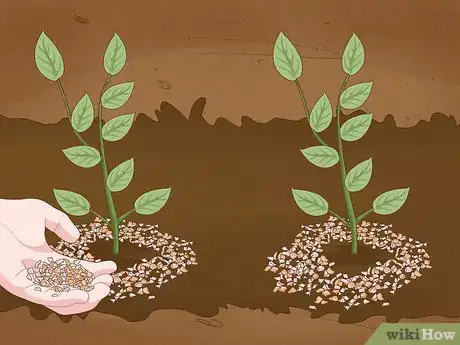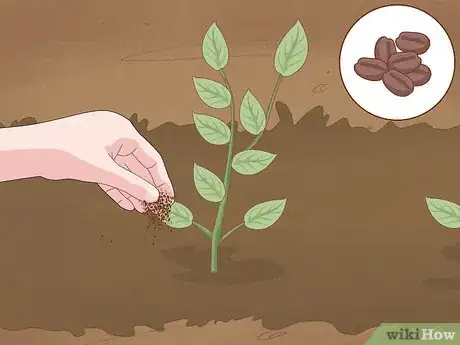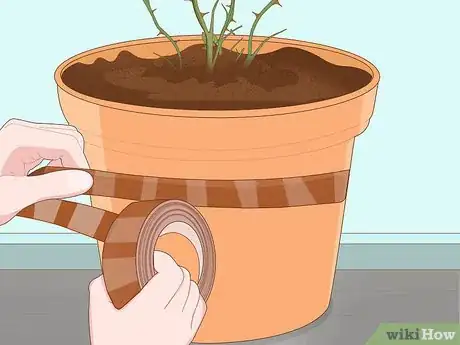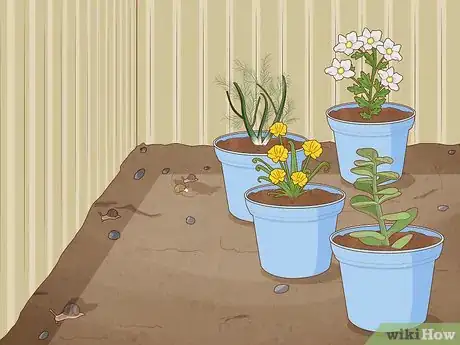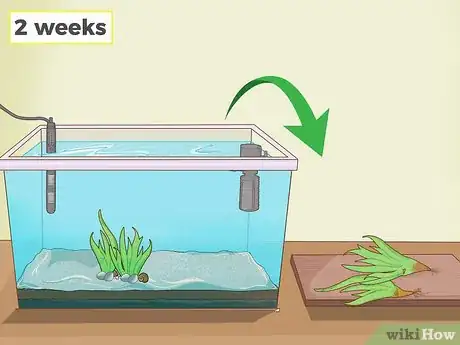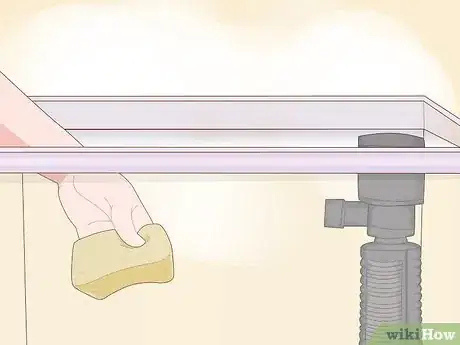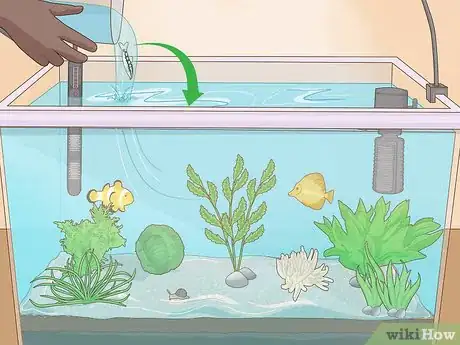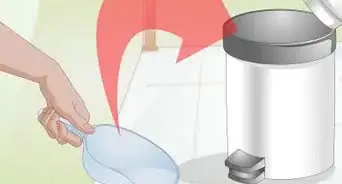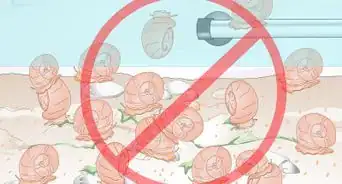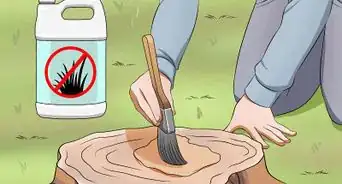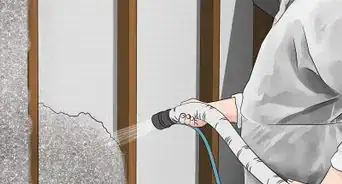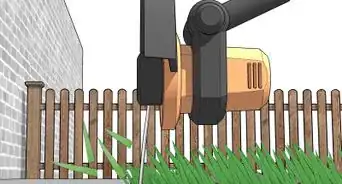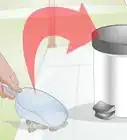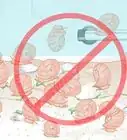This article was co-authored by Melinda Meservy and by wikiHow staff writer, Danielle Blinka, MA, MPA. Melinda Meservy is a Plant Specialist and the Owner of Thyme and Place, a botanical boutique offering plants and gifts in Salt Lake City, Utah. Before starting her own business, Melinda worked in process and business improvement and data analytics. Melinda earned a BA in History from the University of Utah, is trained in lean and agile methodologies, and completed her Certified Professional Facilitator certification. Thyme and Place offers indoor plants and containers, a fully stocked potting bench, and tips on plants to suit your space and lifestyle.
There are 10 references cited in this article, which can be found at the bottom of the page.
wikiHow marks an article as reader-approved once it receives enough positive feedback. This article has 57 testimonials from our readers, earning it our reader-approved status.
This article has been viewed 1,000,175 times.
Finding snails in your garden, home, or aquarium can be frustrating. If left to their own devices, snails will munch on your plants, leave sticky trails all around your home, or overtake your fish tank. Fortunately, you have the power to get rid of snails and protect your turf. Whether you prefer to take the natural approach or don’t mind using pesticides, you can get rid of the snails plaguing your home.
Steps
Removing Land Snails
-
1Make a beer trap to capture the snails.[1] Pour beer into a small container, such as an old tuna fish can. Bury the container in you garden or near the place where you saw the snails, but leave at least 1 inch (2.5 cm) above the soil. The smell of the beer will attract the snails, which will drown in the container.[2]
- Adding yeast will make the traps more enticing to the snails.
- You may need to put out multiple traps, as they will only be effective for snails that are close by.
- Other great options for your beer container include a plastic cup, yogurt cup, bowl, or pie dish.
- Don’t bury your beer trap at soil level, as other beneficial bugs might accidentally die in it.
-
2Pick up and remove the snails if you have the time to do so.[3] Snails are most active in the early morning or at night, so this is the best time to go snail-picking. Put the snails in a bucket or container to move elsewhere.[4]
- You might also decide to kill the snails.
- To make the process quicker, you can put an overturned pot or bowl in your garden or near the area where you’ve seen the snails. The snails will likely hide under the pot, which makes it easy for you to find them.
Advertisement -
3Spray the snails with cold coffee to kill them. The caffeine in coffee negatively affects snails, so they’ll die if you spray them with coffee. However, you have to drench the snail for it to die, so make sure you spray it a lot.[5]
- Make your own coffee spray by brewing a pot of coffee, then letting it cool. Put the coffee in a spray bottle to use around your garden or home.
-
4Apply a homemade garlic spray to repel and possibly kill the snails. Spritz the garlic spray around your garden, yard, and home, as needed. If you spot a snail, you can drench it with the garlic spray. It may kill some snails, and it will also deter them away.
- To make your garlic spray, soak 3 crushed garlic cloves in 1 tablespoon (15 mL) of vegetable oil overnight. Then, strain the liquid into 1 litre (4.2 c) of water. Pour the mixture into a spray bottle. Add 1 teaspoon (4.9 mL) of liquid soap to the solution, then shake the bottle before using.
-
5Use can iron phosphate bait to kill the snails. Iron phosphate is a molluscicide, which means it kills snails and slugs. Simply place the trap in your garden or near the location where you’ve noticed snails, and they’ll be attracted to the bait on it. After they come into contact with the iron phosphate, the snails will die.[6]
- You an find an iron phosphate bait at a local gardening store or online.
- This bait will make the snails stop eating, but they may take as long as a week to die.
- Iron phosphate is the safest bait to use because it’s non-toxic to humans and pets.
-
6Use a molluscicide containing ferric sodium EDTA to kill snails quickly. Distribute the product in the late afternoon or early evening so it will be fresh when the snails become active at night. Sprinkle a light layer of the molluscicide around the area where you've seen the snails. The snails will be attracted to the bait mixed into the molluscicide. After they ingest it, they will die within 3 days.[7]
- This product is generally safe for use around your yard, but keep your children and pets away from the area.
- The molluscicide should be in a thin layer. Don't put out clumps, as other animals could eat it and get sick or die.
-
7Get a pet chicken that will eat the snails. Chickens enjoy munching on snails, so allowing one to roam around your yard or garden is a great natural solution for snail control. The chicken will find the snails for you, so you don't have to do any of the snail removal yourself.
- Ducks may also eat snails, but they prefer slugs over snails.[8]
- Make sure your local laws and ordinances allow you to have a chicken in your yard.
-
8Encourage natural snail predators to live in your garden or yard. These include frogs, toads, turtles, birds, possums, and snakes. Which predator you choose will depend on your environment, so talk to your local agricultural extension office or gardening club for recommendations for biological controls that will work in your area.[9] They’ll recommend plants or shrubs to grow, as well as natural habitats you can build, like a rock garden.[10]
- You might also search online for the best ways of encouraging natural predators in your area.
Discouraging Snail Activity
-
1Water your soil in the morning to reduce egg laying. Snails need to lay eggs in moist soil. Since they typically lay eggs while they’re active at night, you want the ground to dry out before nightfall. If you water your plants in the morning, the ground should dry out over the course of the day.[11]
- If you can, opt for a drip irrigation system or a soaker hose, which will help manage the ground moisture so that snails can’t easily procreate.
-
2Remove moist, decaying debris from around your yard and garden.[12] Snails are very attracted to moist, decaying organic matter, so they’ll likely stick around if you don’t clean up often. Check your yard and garden for debris at least once a week. Be sure to remove these items and place them in a compost or your trash.[13]
- Keep in mind that a compost pile is going to be a carnival for your snails. Place it far away from your yard and garden. Additionally, surround it with an abrasive barrier to reduce snail activity.
-
3Surround your garden or home with an abrasive barrier to deter snails. Great options include broken eggshells, diatomaceous earth, gravel, wood ash, and cedar chips. All of these items are hard for snails to cross, which effectively keeps them out. Put down a thin layer around the location you want the snails to avoid.[14]
- Crush up eggshells for an easy, at home option.
- You can find diatomaceous earth, gravel, wood ash, and cedar chips at a local gardening store or online.
-
4Sprinkle used coffee grounds around your garden, as caffeine deters snails. Since snails are sensitive to caffeine, they will naturally avoid used coffee grounds. Spread the coffee grounds on top of the soil or around the base of your home, as needed.
- If you don’t drink coffee, check with your local coffee shops, as they may give away their used coffee grounds.
-
5Use copper wire or tape to discourage snail activity.[15] Copper gives snails a tiny shock, so they will instinctively avoid it. You can apply copper tape around potted plants, around your garden edges, or wherever the snails are going. If you’re using wire, tie it around your pots or make copper garden stakes.[16]
- As another option, you can sprinkle pennies around the area, as they contain copper.
- You can find copper tape at a local gardening store or online.
-
6Add plants that naturally deter snails. These include foxglove, euphorbias, Japanese anemones, day lilies, succulents, astrantia, salvia, and fennel. Each of these plants has either a smell that snails don’t like or an uncomfortable surface that makes it hard for the snail to climb around it. If you have these in your garden or around your home, snails are less likely to stick around.[17]
- For example, you might put a potted plant near the area where snails are crawling on your home.
- Keep in mind that foxglove is toxic, so it may not be a good option if you have children and pets in your home.
Keeping Your Aquarium Snail-Free
-
1Quarantine plants for 2 weeks before putting them into your aquarium. Aquarium plants are the most common source of unwanted snails. They often harbor eggs or baby snails, which then reproduce once they’re in your tank. Fortunately, you can avoid putting infected plants into your aquarium by quarantining them for 2 weeks before putting them in your tank.
- If you see any snails during the quarantine period, pick them off the plant as soon as you notice them.
-
2Treat plants in a 1:19 bleach-water solution before adding them to your aquarium. Create your bleach solution by adding 1 part bleach to 19 parts water. Then, dip each individual plant into the solution and immediately withdraw it. This will kill any lingering snails or eggs. Rinse the plant in fresh water before putting it in your aquarium.[18]
- You only need to submerge the plant in the solution for a second for it to work, so it's okay to just dip and remove the plant in one motion.
-
3Clean the entire aquarium, including removing the gravel. You can purge all of the snails by hand if you have the time. Move your fish to a temporary tank, then empty the water from the aquarium. Remove everything, including the gravel and substrate, from the tank, then scrub all of the snails from the sides of the tank.
- Replace your gravel and substrate for best results.
- Before you put your plants and other fixtures back in the aquarium, clean them. One way to do this is to dip them in a cleaning solution that’s 19 parts water and 1 part bleach. This will kill any snails or eggs that are on them.
- If you don’t want to take everything out of the tank, you can use a siphon to suck out just the gravel and substrate. Additionally, you’ll need to pick the snails off the sides of the tank.[19]
-
4Introduce fish that eat snails. Some fish eat snails and can clear out your tank for you. When selecting a predator fish, check its fact sheet to make sure it won’t eat your other fish. Additionally, make sure it’s not too big for your tank.
- For a small fish tank, you might choose a zebra or dwarf chain loach.
- If you have a large fish tank, you can choose a clown loach, pictus catfish, koi, or large goldfish.[20]
- As an alternative, you might place an assassin snail into your tank. It will enjoy eating the other snails in the tank and won’t reproduce often.
-
5Put a snail trap in your tank to catch and remove the snails. A snail trap entices the snails to enter a cage then prevents them from leaving. This allows you to easily catch and remove all of the snails without harming your fish.[21]
- You can find snail traps at your local pet store or online.
- You can make your own snail trap by clipping a large piece of lettuce to the side of your tank. Leave it in place overnight, then remove it in the morning. It should attract a fair number of snails, which will now be gone from your tank![22]
-
6Add fish-friendly copper sulfate to your aquarium to kill the snails. Snails are sensitive to copper, so they will die if the water contains copper sulfate. Most fish are unaffected by copper sulfate, making it a safe option for most aquariums.[23]
- If you’re worried about your fish dying, check their fact sheet to see if they are sensitive to copper.
- Don’t use this treatment if you have shrimp or ornamental snails, as they are also sensitive to copper.
- You can find copper sulfate at a local pet store or online.
Expert Q&A
Did you know you can get premium answers for this article?
Unlock premium answers by supporting wikiHow
-
QuestionHow do you control snails?
 Melinda MeservyMelinda Meservy is a Plant Specialist and the Owner of Thyme and Place, a botanical boutique offering plants and gifts in Salt Lake City, Utah. Before starting her own business, Melinda worked in process and business improvement and data analytics. Melinda earned a BA in History from the University of Utah, is trained in lean and agile methodologies, and completed her Certified Professional Facilitator certification. Thyme and Place offers indoor plants and containers, a fully stocked potting bench, and tips on plants to suit your space and lifestyle.
Melinda MeservyMelinda Meservy is a Plant Specialist and the Owner of Thyme and Place, a botanical boutique offering plants and gifts in Salt Lake City, Utah. Before starting her own business, Melinda worked in process and business improvement and data analytics. Melinda earned a BA in History from the University of Utah, is trained in lean and agile methodologies, and completed her Certified Professional Facilitator certification. Thyme and Place offers indoor plants and containers, a fully stocked potting bench, and tips on plants to suit your space and lifestyle.
Plant Specialist
-
QuestionDo coffee grounds deter snails?
 wikiHow Staff EditorThis answer was written by one of our trained team of researchers who validated it for accuracy and comprehensiveness.
wikiHow Staff EditorThis answer was written by one of our trained team of researchers who validated it for accuracy and comprehensiveness.
Staff Answer wikiHow Staff EditorStaff AnswerCoffee grounds may deter some species of slugs but their effectiveness as a deterrence is varied––some gardeners have found that snails and slugs just speed up to get past the grounds quickly. Caffeine sprays have been found to be effective when sprayed on leaves (snails don’t like such leaves)(Nature 2002), so in some cases it may be more effective to use the coffee grounds diluted in water as a spray. Using coffee grounds to deter snails is worth trying but realize it can impact beneficial insects as well, so keep an eye on how it works for your garden. To avoid acidity build-up in the soil, use used coffee grounds (neutral pH) rather than fresh (acidic).
wikiHow Staff EditorStaff AnswerCoffee grounds may deter some species of slugs but their effectiveness as a deterrence is varied––some gardeners have found that snails and slugs just speed up to get past the grounds quickly. Caffeine sprays have been found to be effective when sprayed on leaves (snails don’t like such leaves)(Nature 2002), so in some cases it may be more effective to use the coffee grounds diluted in water as a spray. Using coffee grounds to deter snails is worth trying but realize it can impact beneficial insects as well, so keep an eye on how it works for your garden. To avoid acidity build-up in the soil, use used coffee grounds (neutral pH) rather than fresh (acidic). -
QuestionWhat is the juice/water ratio for the yeast and sugar trap? (alternate to beer trap)
 wikiHow Staff EditorThis answer was written by one of our trained team of researchers who validated it for accuracy and comprehensiveness.
wikiHow Staff EditorThis answer was written by one of our trained team of researchers who validated it for accuracy and comprehensiveness.
Staff Answer wikiHow Staff EditorStaff AnswerFor the trap mentioned in the article above, 1 to 2 cups of water or grape juice would work, depending on the container size used. For another similar trap, using a standard jar, the suggested amount is: two cups of warm water, a packet of dry yeast, and one teaspoonful each of salt and sugar. For more detail on yeast traps, see How to Get Rid of Snails with Yeast.
wikiHow Staff EditorStaff AnswerFor the trap mentioned in the article above, 1 to 2 cups of water or grape juice would work, depending on the container size used. For another similar trap, using a standard jar, the suggested amount is: two cups of warm water, a packet of dry yeast, and one teaspoonful each of salt and sugar. For more detail on yeast traps, see How to Get Rid of Snails with Yeast.
Warnings
- Avoid using salt to kill snails, as it will likely damage your plants or the soil in your yard or garden.⧼thumbs_response⧽
- Be careful when using coffee grounds, as they can affect the pH of the soil.⧼thumbs_response⧽
Things You'll Need
Removing Land Snails
- Small container
- Beer
- Bucket
- Old flower pot (optional)
- Cold coffee
- Spray bottle
- Iron phosphate bait (optional)
- Molluscicide containing ferric sodium EDTA (optional)
- 3 cloves garlic
- 1 tablespoon (15 mL) of vegetable oil
- 1 litre (4.2 c) of water
- 1 teaspoon (4.9 mL) of liquid soap
- Chicken (optional)
- Native plants (optional)
- Rock garden (optional)
Discouraging Snail Activity
- Watering can
- Drip irrigation system (optional)
- Soak hose (optional)
- Egg shells, diatomaceous earth, gravel, wood ash, or cedar shavings
- Used coffee grounds
- Copper tape, copper wire, or pennies
- Plants
Keeping Your Aquarium Snail-Free
- Bucket
- 1:19 bleach-water solution
- Fish net
- Temporary fish tank
- Towels
- Water
- Siphon (optional)
- Gravel
- Substrate
- Predatory fish or snail (optional)
- Snail trap (optional)
- Copper sulfate (optional)
References
- ↑ Melinda Meservy. Plant Specialist. Expert Interview. 18 August 2020.
- ↑ http://www.aos.org/orchids/orchid-pests-diseases/snails-and-slugs.aspx
- ↑ Melinda Meservy. Plant Specialist. Expert Interview. 18 August 2020.
- ↑ https://ucanr.edu/sites/glennmg/?story=1614
- ↑ https://www.almanac.com/pest/slugs#
- ↑ https://ucanr.edu/sites/glennmg/?story=1614
- ↑ http://ipm.ucanr.edu/PMG/PESTNOTES/pn7427.html
- ↑ https://modernfarmer.com/2015/05/slime-fight-how-to-manage-slugs-and-snails/
- ↑ http://www.aos.org/orchids/orchid-pests-diseases/snails-and-slugs.aspx
- ↑ https://www.rhs.org.uk/science/conservation-biodiversity/wildlife/encourage-wildlife-to-your-garden
- ↑ https://ucanr.edu/sites/glennmg/?story=1614
- ↑ Melinda Meservy. Plant Specialist. Expert Interview. 18 August 2020.
- ↑ https://ucanr.edu/sites/glennmg/?story=1614
- ↑ https://ucanr.edu/sites/glennmg/?story=1614
- ↑ Melinda Meservy. Plant Specialist. Expert Interview. 18 August 2020.
- ↑ http://www.aos.org/orchids/orchid-pests-diseases/snails-and-slugs.aspx
- ↑ https://www.countryliving.com/uk/homes-interiors/gardens/g21282801/best-plants-naturally-deter-slugs/?slide=2
- ↑ https://www.petguide.com/blog/invertebrates/fish/aquarium-snails-the-good-the-bad-and-the-ugly/
- ↑ https://www.practicalfishkeeping.co.uk/features/articles/problem-solver-snails
- ↑ https://www.practicalfishkeeping.co.uk/features/articles/problem-solver-snails
- ↑ https://www.practicalfishkeeping.co.uk/features/articles/problem-solver-snails
- ↑ https://www.petguide.com/blog/invertebrates/fish/aquarium-snails-the-good-the-bad-and-the-ugly/
- ↑ https://www.practicalfishkeeping.co.uk/features/articles/problem-solver-snails
- ↑ Melinda Meservy. Plant Specialist. Expert Interview. 18 August 2020.
About This Article
To get rid of land snails, start by soaking crushed garlic cloves in vegetable oil overnight. Then, strain the liquid into some water, and pour the mixture into a spray bottle to use as a repellent around your yard and garden. You can also spray snails directly with cold coffee to kill them. Or, you can sprinkle used coffee grounds around your yard and garden since snails avoid caffeine. To learn how to get rid of marine snails, scroll down!
